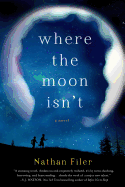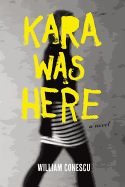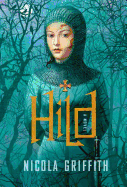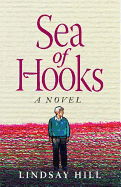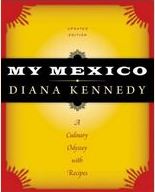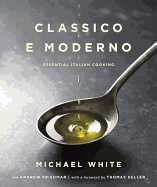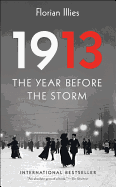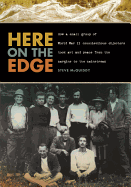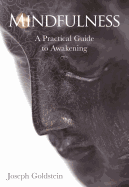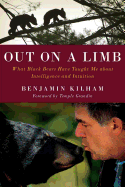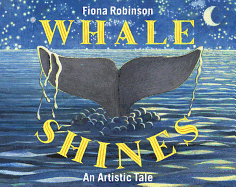JenniferDurham.jpeg) |
| photo: Jennifer Durham |
Nicola Griffith is a native of Yorkshire, England, where she earned her beer money teaching women's self-defense, fronting a band and arm-wrestling in bars. In 1993 she was diagnosed with multiple sclerosis. Her novels are Ammonite, Slow River, The Blue Place, Stay, Always and, now, Hild (see our review below). Her awards include the Tiptree, Nebula and World Fantasy awards, the Premio Italia and the Lambda Literary Award. Griffith lives with her partner, the writer Kelley Eskridge, in Seattle, Wash.
What drew you to the historical figure of St. Hilda of Whitby?
I was in my early 20s when I discovered Whitby Abbey. I crossed the threshold of the ruins and it was as though history fisted up through the turf and through me. History, from that moment, was real, made by real people with their own dreams, disappointments and dailyness.
I wanted to know more. I picked up a battered 1959 Pelican edition of Trevelyan's A Shortened History of England and read about the Synod of Whitby, a debate, held in 664 CE, hosted by a woman called Hild, in which advocates for Celtic and Roman churches fought for dominance and the king's endorsement. This Synod is a major turning point of English history, I thought. But who is Hild?
For the last 20 years I've been groping my way through ever more modern scholarship. And, it turns out, what we know about Hild barely fills a single page. So I wrote this book to find out: I built the seventh century and grew Hild inside.
The language in Hild is sensory, enfolding the reader physically. It's a reminder that people in earlier centuries had a much more tactile relationship with their world.
If the sun didn't shine, you starved. If it shone too much, you starved. Starvation over a wide area leads to shortages, shortages lead to war, war leads to suffering for all. So people of that era, of most classes and ethnicities, would have been aware, all the time, of the physical details of their world.
But it's not just that. Setting is the heart of my joy as a writer. It's how I express character.
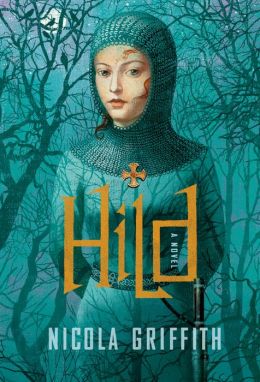 The language in Hild seems carefully wrought to evoke the period and setting of seventh-century Britain. Was Old English an inspiration in writing this book?
The language in Hild seems carefully wrought to evoke the period and setting of seventh-century Britain. Was Old English an inspiration in writing this book?
I'm grinning at the notion of "carefully" and "writing this book."
Yes, Old English was foundational for me. Especially the poetry. I read the surviving poems, in several translations and in the original (though my OE is rubbish). It's stirring--heroic, alliterative, elegiac. But I'm not sure how representative it is of Hild's era. It's written, rather than being oral, which means it came to us through the double filter of Latinised, Christian scribes.
I read a fair amount of old Welsh/British poetry, too, because Britain in Hild's time was a seriously multi-ethnic place. Scholars argue whether that poetry was originally written in Hild's time or centuries later, but it, too, is stirring and heroic, proud in a slightly different register.
I took the poetry, stuffed it into the black box of my writing brain, and let it ferment. And then I quailed. I was terrified of screwing it up. In the end I did what any good Anglo-Saxon would: I got drunk, laughed in the face of fear, and charged. So while the thinking beforehand and the editing afterwards were carefully considered, the writing itself was more like riding a bull.
Women in this period were constrained in many ways, yet some of your most fascinating characters are women who find ways to subvert their subservient destiny.
I'd say that in Hild's time a person was constrained largely by their status, ethnicity and character, as well as their gender. Much like today. Much like any era.
By birth, Hild was high status. By the canny machinations of her mother, she was looked upon as special from the day she was born. By natural inclination she was extraordinary. Singular. But singular within the constraints of her time.
So much of what we think we know of Britain in the early seventh century is guesswork based on literary evidence written by male Christian scribes, with conscious and unconscious bias. But sifting through the evidence, my guess is that women and men of her status occupied different worlds, seriously constrained by gender roles, yes. But--and try not to flinch--while their roles were very different you could see them as relatively equal. Or perhaps a better word might be balanced.
In high-status households, where there is surplus and luxury, there is also specialization. So in a king's household there would be a scop (combination historian, entertainer and PR flack), whom I'm guessing would be a man, though that guess is based entirely on textual evidence, which, as I've said, isn't wholly reliable. Gesiths, or the king's personal warriors, would be men, because weapons were very much a man's province--unless you were a priest. If we can believe Bede, priests would most likely be men, forbidden to ride stallions or carry edged iron. Textual and archeological evidence could be interpreted to show that prophecy was a woman's prerogative. And we know women ran the household: they literally held the keys and made decisions about resources. If you bear in mind that 1,400 years ago, all that stood between life and death was managing resources and planning the production of same, running the household/estate was the most important job in the world.
It wasn't an accident that in seventh-century Britain (and Frankia) women like Hild headed the enormous mixed-sex religious foundations. Women ran just about everything except armies. Their organisational and logistics skills were what stood between a community and starvation.
The lifelong relationship, almost like marriage, of the gemæcce--two women bonded from adolescence for life--is of particular interest.
By some estimates, women spent 65% of their time in the production of textiles. That's a greater proportion of the day than sleeping, child care and food preparation combined. And much of that takes two people working together.
So I made up the concept of gemæcce and repurposed an Old English word that means partner, mate. I imagined that high-status women would have their gemæcces: a woman to weep and weave with, to look after your children when you can't, who'll be there when you're giving birth, who knows what it's like to have a husband at war or to be married to someone who is not only a stranger to you but an enemy.
The sophistication of the king's court was surprising. Were you compelled by the levels of Game of Thrones-like intrigue?
Just look at the Staffordshire Hoard, which is being tentatively ascribed a date of the late seventh century--the end of Hild's life. That speaks to enormous sophistication.
There was a lot of wealth in that time and place, and where there's wealth, there's luxury. Where there's luxury, there's scheming. People are people. The political backbone of Hild--the exiled sons of Æthelfrith and Edwin's retaking of Northumbrian by force and politics--can be easily extrapolated from the data in various Irish annals and Anglo-Saxon king lists.
And where there are warring families, then, yes, you get the kind of intrigue George Martin uses in his Song of Ice and Fire series. History is full of it. And I'm glad. Politics--both verbal and violent--is what makes for good story.
Can you name books or other sources of inspiration?
For this book, novelists who wrote of the so-called Dark Ages, particularly those I think of as the English landscape writers: Rosemary Sutcliff, Henry Treece, Mary Stewart. They each had different concerns--the society, as epitomised by one man (and it was always a man) for Sutcliff, the individual for Treece, the individual who guides (but does not direct) others for Stewart. But they were all keenly aware of how time and place influence history. We are all products of our circumstances.
What's next for Hild?
This book ends when she is 19--and she lives to the ripe old age of 66. There's lots of change ahead for her world, including a serious shift to literate culture and the interference of Christian notions of morality in women's lives.
And war, of course, lots of war.... --Ilana Teitelbaum, book reviewer at the Huffington Post
Nicola Griffith: A Seventh Century Game of Thrones
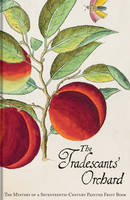 The Tradescants' Orchard: The Mystery of a Seventeenth-Century Painted Fruit Book by Barrie Juniper and Hanneke Grootenboer (Bodleian Library, $65) reproduces early horticultural watercolors with stylized vignettes of little critters. Some of them will be familiar, having appeared on stationery and greeting cards; however, having all 66 original illustrations, along with commentary and history, is a treat.
The Tradescants' Orchard: The Mystery of a Seventeenth-Century Painted Fruit Book by Barrie Juniper and Hanneke Grootenboer (Bodleian Library, $65) reproduces early horticultural watercolors with stylized vignettes of little critters. Some of them will be familiar, having appeared on stationery and greeting cards; however, having all 66 original illustrations, along with commentary and history, is a treat.


JenniferDurham.jpeg)
 The language in Hild seems carefully wrought to evoke the period and setting of seventh-century Britain. Was Old English an inspiration in writing this book?
The language in Hild seems carefully wrought to evoke the period and setting of seventh-century Britain. Was Old English an inspiration in writing this book?